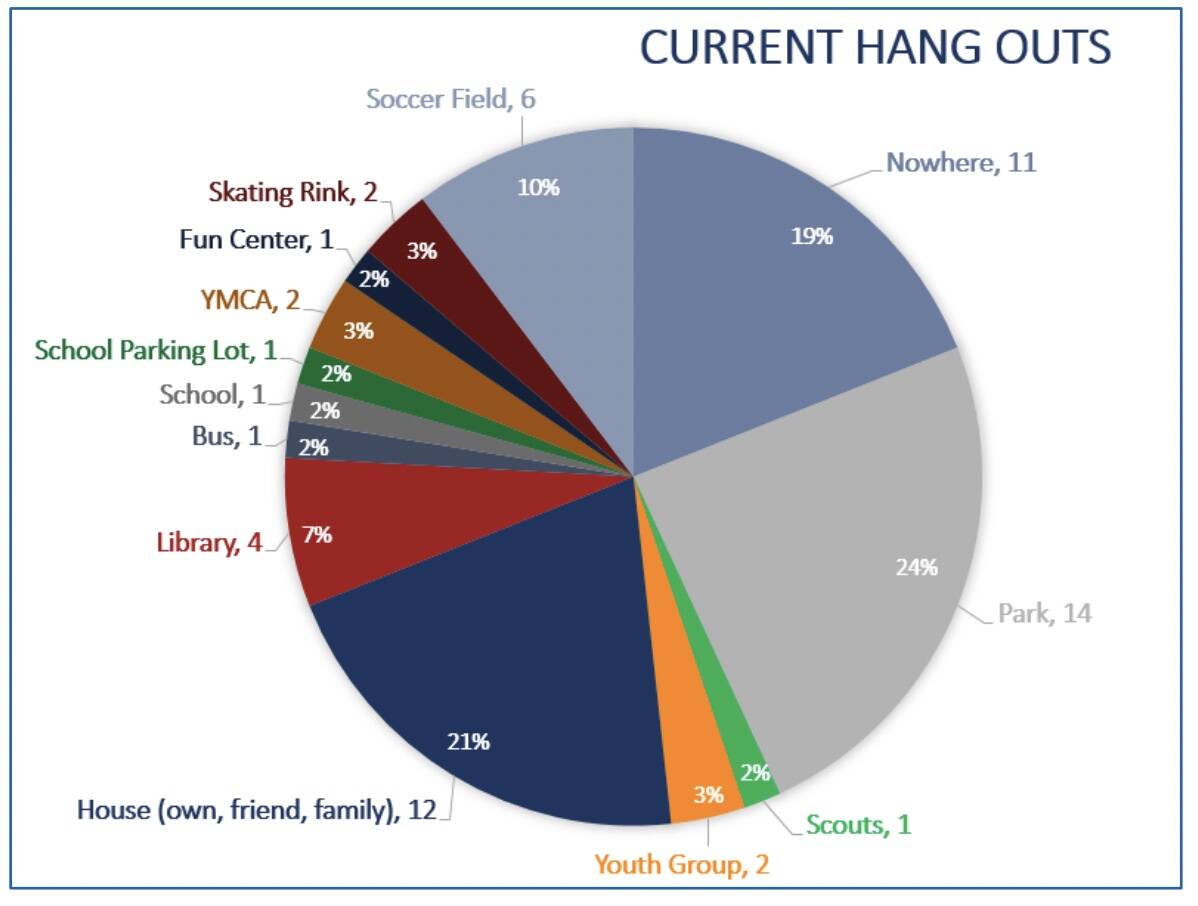One-fifth of youth surveyed in Grays Harbor County don’t have a reliable place to hang out other than school or home, a new public health assessment found.
The report recommends coordinating increased access to safe and constructive community hangout spots — labeled “third spaces” — as local public health officials focus on an “upstream” approach to preventing the disorders placing strain on the medical system.
“There’s a lot of data that shows sense of belonging and reducing isolation really does make a big difference over someone’s lifetime for whether they’re going to struggle with substance use, whether they’re going to have untreated mental health issues, and whether they’re going to have more prosocial involvement,” said Cassie Lentz, Healthy Places manager with Grays Harbor County Public Health.
In 2023, Grays Harbor County allocated more than $1 million of treatment sales tax revenue — which is restricted to behavioral health uses — for the health department to carry out its three-year strategic plan. Along with contributing to a mental health clinic in Elma, the money funded a pair of $100,000 assessments including one to pinpoint the need in youth and young adults for community spaces.
Consulting firm Health Management Associates surveyed 76 Grays Harbor youth ages 12 to 21 and talked with a handful of youth organizations to gather input. Researchers also drew from a 2021 statewide survey that pegged the county below Washington averages for “neighborhood attachment” and opportunities for positive social involvement. Grays Harbor had more chances to join sports teams than the state average but less chances at service clubs like 4-H or Scouts, the 2021 survey found.
According to Lentz, third spaces to relax without structure, like the YMCA or after-school programs, are equally important to those based on an activity, like sports or clubs.
Other than the 20% of Grays Harbor youth who said they had nowhere to hangout, another quarter said parks were the third space of choice, while friends’ houses were the go-to for 21%.
Libraries, youth groups, the skating rink and YMCA were all options for a fraction of other respondents.
According to the survey, 81% of youth said a “hangout space” would be their preference for a third space.
Many groups on the Harbor are already doing “pretty elaborate, interesting and successful things” to create third spaces, said Jessica Molina, a community health specialist with the health department.
Coordinating work across the county rather than relying on a single new community center will be key to getting kids in touch with the third spaces they need.
“There was this disconnection of what’s happening countywide,” Molina said.
The report recommends creating a hub for third space providers to communicate information about upcoming events or programs, and for a “backbone” entity to serve as a thread between the various coalitions and groups.
Keeping the timing consistent for third space events will also be important, Molina said.
The health department hopes the new report will help third space providers with sustaining projects as they move forward, both with funding and enough data to guide plans. According to the report, some stakeholders noted that past efforts that were unsuccessful, for whatever reason, resulted in apathy and cynicism.
“If we can provide that infrastructure to other agencies and it’s ready to go, hopefully that can be beneficial to them,” Lentz said. “They’re doing the work every day. This is one less thing, hopefully, they have to do.”
Contact reporter Clayton Franke at 406-552-3917 or clayton.franke@thedailyworld.com.


